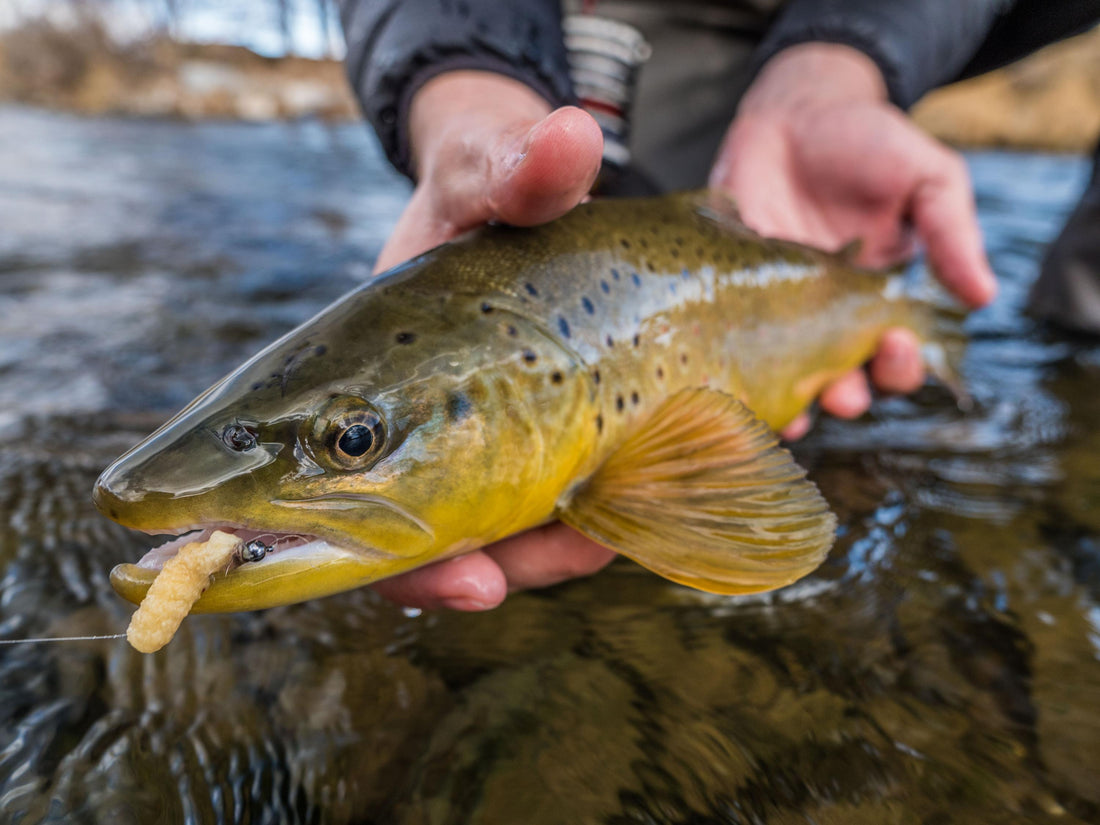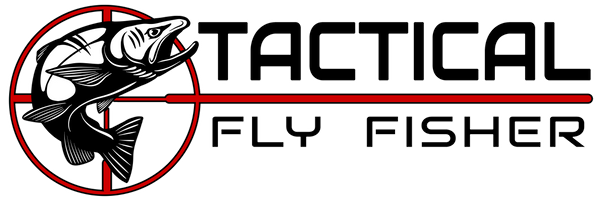
The Mop Fly Tying Tutorial
Share
The Mop Fly has gotten a lot of attention during the last several years but it has been making its way around the competition circuit for a while longer. I was first introduced to the Mop back in 2013 by my Fly Fishing Team USA mate Paul Bourcq who was part of a tight knit group of North Carolina competitors who first started fishing the Mop in competitions, at least to my knowledge. At first I scoffed at the fly and I don’t think I actually fished it more than once or twice until the next year at the World Fly Fishing Championships in the Czech Republic. During practice for the championship, my teammate Pat Weiss demonstrated through mopping a number of fish that I should reconsider my position on the fly and its charms. Pat has made me reconsider lots of things over the years and the Mop was no exception. I ended up fishing it in two sessions on the Vltava River and, along with the soft hackle carrot , it was a solid contributor to my win in the last river session in that championship.
Despite the success during that championship, it has taken repeated knocks upside my head to put the Mop into my regular fly rotation. Part of that reason is the Mop is definitely an all or nothing fly in my experience, especially in the rivers of the western US that I’m accustomed to. During most of my trips back East the Mop has been a successful fly. However, during the two years that I lived in Oregon, I tried the fly at least every few trips on my local trout river. I never did catch a trout on a Mop while I was there, though I did find some interested steelhead. In that river, it was a nothing fly, but my experience since being back in Utah has been different.
In Slovakia this year, Pat once again showed me during practice that I should be fishing Mops more regularly. He pulled a lot of brown trout out from under rocks in water that had been fished very intensely by dozens of teams prior to our arrival and he did it with a chartreuse Mop. He said he felt the fly was so magnetic that pressured brown trout are willing to leave the safety of sneaky lies to eat it. It’s size, movement, and color forces them to make a decision. He was right.
Upon returning home I resolved to fish it more regularly on my local rivers. One of them is a heavily fished tailwater with fish that are known for being difficult to catch at times. They have a reputation for wanting small imitative flies and for years I fell into that mold almost exclusively as well when I fished the river. A couple of days after I returned from Slovakia I went to what I consider one of the most demanding stretches of the river with the hope that I would get a chance to sight fish in the shallows. Sure enough, I found a lot of brown trout sitting in inches of water near the bank as I often do there. I rigged up with a Walt’s Worm (as a sow bug imitation) and a baetis nymph and began targeting the fish I could see in the skinny shallows. In the first couple of hours I landed about half of the fish I cast too and brought about a dozen fish to the net. It was a pretty sold start for that piece of water.
After fishing downriver I returned to the first stretch I had fished to see if I could coax a few more fish. In the first piece of water with any cushion I spotted a large brown trout sitting in about eight inches of water just off the bank. I threw my rig at it with no response and I felt lucky that I hadn’t spooked the fish with my initial presentations. I started looking through my fly boxes wondering what to try next. I still had a chartreuse Mop sitting in my drying patch from Slovakia so I thought, “why not? The worst thing I’ll do is spook the fish.” I put the Mop on the point and switched the Walt’s Worm to the dropper. On my first cast the brown trout flushed on my flies like a toilet and was gone. I was flummoxed not knowing if the fish was interested in the Mop and I had botched the presentation or if it was scared out of its mind. A few feet upstream I found another target brown trout and it clobbered the mop on the first presentation. I proceeded to fish back through water I had already fished. Most of the fish that I saw I caught and I caught plenty more out in the deeper water where I couldn’t spot fish. The second two hours of my trip netted me almost twice as many fish as in the first couple of hours and many were caught where I had already fished.

A solid rainbow during the session referred to in the previous paragraph.
There were a couple of big surprises I had from this experience. 1. I had just caught a bunch of wily fish on a chartreuse Mop in a place where there are no inchworms to speak of (a plausible reason for the fly to be imitative elsewhere) and the trout receive a LOT of pressure from anglers. This is not something I was expecting. 2. About half of the fish were actually on the Walt’s Worm that I had already been fishing. So what changed? I thought about the situation for a while and I realized the Mop was changing the way my rig drifted.
In addition to being a big mobile bite that seems to be hard to resist for some trout, the Mop has some unique characteristics that affects its drift and thereby the drift of any other flies you have on the rig. It is not streamlined but features a bulbous shape with microfibers that catch and wave in the current. As such, it requires extra weight to get the Mop to depth and descend with any speed. In the situation on my local river above, I had been fishing two flies with 2 to 2.3 mm beads in shallow water throughout the first part of my day but I switched to a 2.8 mm, and sometimes a 3.3 mm bead, on the Mop to be able to fish it in the same water. At times this can be detrimental and the Mop isn’t always the best fly to fish in complex pocket-water when you need it to get to depth quickly in a bunch of conflicting currents. However, once the Mop gets to depth, it stays there and it slows down the drift of the rest of the rig as well. Because the Mop has a lot of volume and mass (much of it water weight), once it has reached the slow boundary layer near the bed of the river it takes a lot more force to get it to leave that zone than other flies. This makes the Mop a good fly to fish on windy days when you need a fly to anchor your rig to the bottom to avoid the wind flying your Euro -nymphing leader like a kite. As long as it is tied in a manner that it will invert, the Mop is able to slither over the rocks on the bottom without snagging. This has the effect of slowing the rig down and the dropper above actually experiences a bit of upstream drag as it slows in the drift. This isn’t necessarily always a good thing but on the day mentioned above I caught several fish on the dropper that I wasn’t able to catch with the same fly on a different rig earlier. Several times I was able to watch the rig temporarily slowed by the slithering drift of the Mop over the bottom, which left the dropper hanging in the target fish’s face and provoked a take.




A few fish above from a recent trip to Yellowstone that decided they liked the mop.
So in the end I would say there are some unique properties of Mops that make them a fly that you should definitely try if you want to increase your catch rate. It is not a fly that is going to work all of the time. I actually fished it in the same stretch of river referred to above this last week and I had no willing takers on several colors of Mops. However, on the same day on a different stretch of the same river upstream, I had half a dozen fish eat it in the last half an hour of the day. It isn’t a fly that I can pinpoint when and where it is going to work. I have been surprised both ways with instances when it was exceptionally effective when I thought it wouldn’t be as well as times when I thought for sure it would work but it didn’t. That’s why it’s a fly you just have to try. Most of the time it won’t take long for the fish to tell you whether they want it on the day or not. While some people have a hard time getting over the fact that the fly is a “junk fly” and it is made out of materials that weren’t originally available in a fly shop, the fish can help you get over the stigma really quickly. If you want to move past that stigma yourself, get some Mop bodies from B and C Fishing Supplies in the shop and get tying. You may wonder why you might need a tutorial for this fly but I've learned a few tricks, from teammates and experimentation, that have made the fly more durable and successful for me so I hope you'll give it a watch.
Fly Recipe
Hook: Sizes 10-12. Either use a straight nymph hook with and inverting tungsten bead or a jig hook with a slotted bead. Dohiku 303, Fasna 210, Fasna 415, or Dohiku HDJ are good options.
Bead: Slotted or Inverting Tactical Fly Fisher Tungsten Bead. I use black nickel a lot but other colors work very well also. Vary the bead size based on how much weight you need.
Body: Mop bodies from Tactical Fly Fisher or Baetis. I prefer to not tie the extended body much longer than the hook shank. I've had a lot of lost fish and fouled Mop tails when they are tied longer.
Thread: 8/0 or 6/0 Uni tan, rusty dun, or another color to suit your preference.
Dubbing: grey Spirit River UV2 Scud/Shrimp dubbing or natural hare's ear Hareline Dubbin.
Tools and glue used in the tutorial:
Bobbin. Choose from any in this category that you like.
Whip Finisher. Choose from any in this category that you like.
